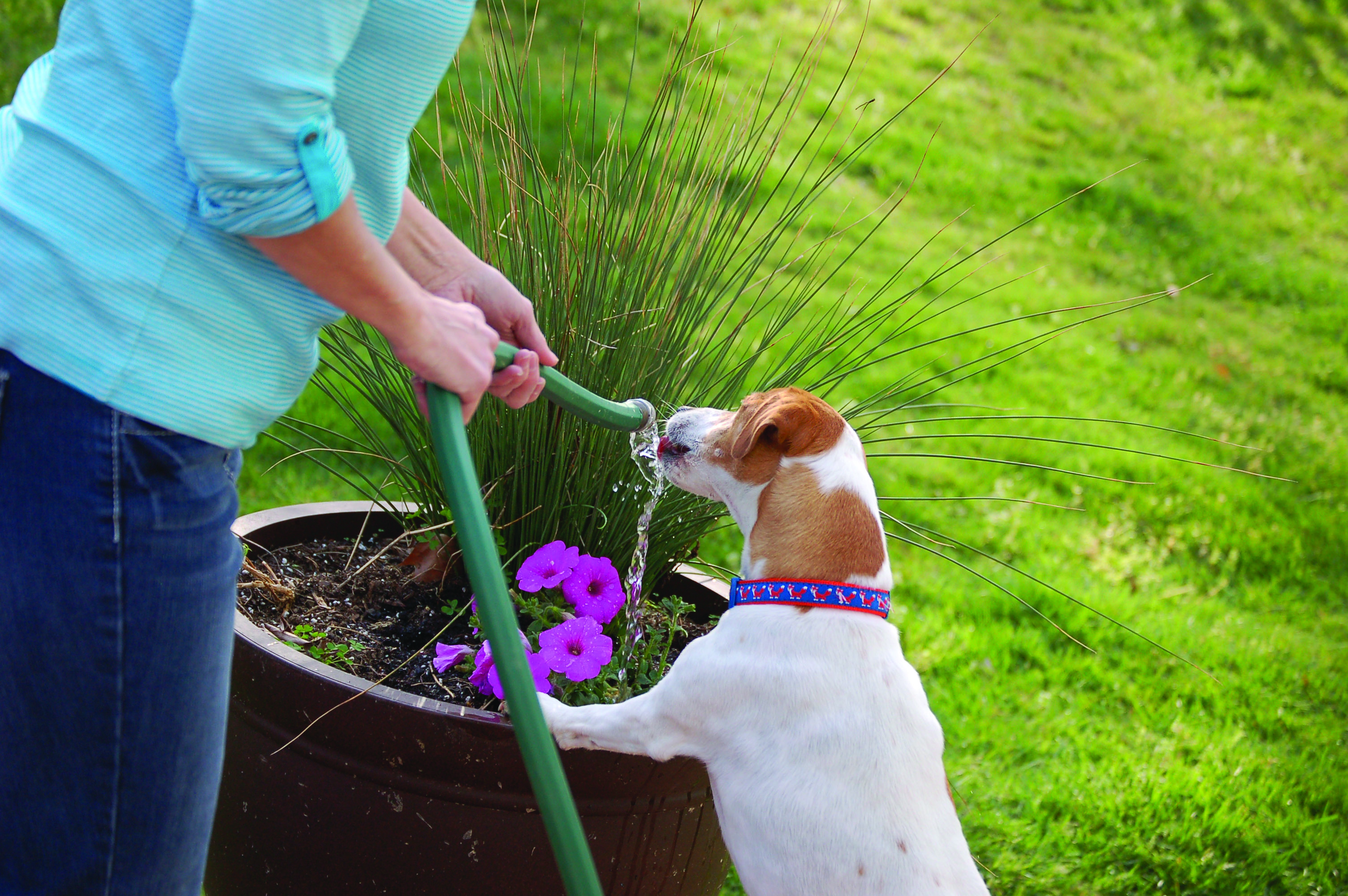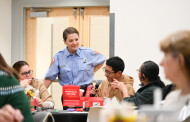With COVID-19 starting to loosen its grip on our social lives and summer fast approaching, being outside is a great escape from the drama on our televisions. It can also be a wonderful time with our pets! The only catch with that is our furry friends sometimes have more trouble dealing with the hotter temperatures than we do. They tend to get overheated more frequently than we realize. We have all heard of the stories of dogs being trapped in vehicles and overheating. This is a very real possibility (and can happen quickly!), but what other ways can our beloved family members have a heat stroke? And what exactly is heat exhaustion?
Heat exhaustion, or hyperthermia, happens when your dog’s body temperature becomes too high, and their body is unable to regulate it. For our pets, this usually happens in the summer months when they are unable to escape the hot daytime temperatures. Mild overheating can be treated at home, but in more severe cases of heatstroke, bringing your pet to a veterinary hospital is necessary. We want to provide you with all the information you will need to help make the best choices for you and your furry friends.
First of all, you need to know what to look for! Below are the signs of heat exhaustion in dogs. Keep an eye out for any or all of these symptoms while still having a great time in the summer sun.
Difficulty breathing or heavy panting
Excessive drooling. Larger amounts than normal, or drool that is stickier or thicker than what your dog normally produces, can be a sign that your dog is dehydrated or suffering from heat exhaustion.
Fever. For our cats and dogs, normal body temperature is 100.5 to 102.5. If their temperature is above this, then we are in a dangerous zone.
Rapid heartbeat. You can best feel this by placing your hand on your dog’s chest, right behind their elbow. Larger dogs have slower heart rates, and smaller dogs and puppies tend to be faster. Try it out while your dog is resting to see what their normal heart rate is. It could help out in a future situation.
Discolored gums. If the gums are bright red, purple, blue, or gray, these are signs that your pet is having trouble.
Dizziness. Trouble walking in a straight line, stumbling, or bumping into the wall or furniture can all be signs that your dog is dizzy.
Muscle tremors
Lack of urine
Lethargy
Vomiting or diarrhea
Here are some ways that we can all still have a great time outside this summer!
WATER – The number one thing that can help with heat exhaustion is WATER! Having water with you during a hike or a run outside is an essential part of our own routine, why not for our dogs, too? Bringing along a larger reusable water bottle or bringing along a separate bottle can be just as easy! A collapsible water bowl for your dog is easily carried and some come with carabiners already attached!
Shade – Always have a shady spot outside in the backyard while outside with your dogs. The shade is significantly cooler than areas in direct sunlight. Provide a cooling blanket if your dog would prefer that, but usually a shaded spot on the pavement or concrete will be very cool and pleasing for your dog.
Walking times – Make sure you start earlier in the day and later in the evening for longer walks. The temperatures and the pathways will be much cooler.
Limited time outside – If you do have your dog outside during the heat of the day, then limit the amount of time they are out there. This may depend on how hot it is but consider limiting time outdoors to 15 minutes at a time. High-energy exercise should be at most 10-15 minutes at a time and then give your dog a break during which they can go inside where there is a fan or it is air conditioned, or they can lay in the shade outside. Either way, give them plenty of water.
Sidewalks and concrete – Try hard to avoid hot sidewalks during the day. Make sure that grass or dirt is along your walking route. Whether you are walking on concrete, pavement, or asphalt, the temperature is dramatically different—almost 30ºF-50ºF warmer! If you are not able to move walks to a grass or dirt area, then consider a set of booties for your furry friend! There are super-duty ones that can handle rough terrains, especially if you and your dog like to go on hiking trips together.
Keep the house cool – Turning off the A/C while you are not home is definitely something we all do to try and save on power bills, but that can make the house too warm for your pets during these long summer days.
Board your dog while taking a vacation – Not having a watchful eye during these hot months can be dangerous. Boarding facilities and your local vet can provide around-the-clock attention (especially when outside) and a cool environment for your pet to stay in.
If you are concerned that your pet is overheated, there are a few simple tips that can help bring their body temperature back to a normal range. First, bring your dog inside! Getting your pet into a cooler space will be very important for their recovery. A bathroom may be a great space for this, especially with the next step—cool water! Soaking your dog in cool, not cold, water will help bring their internal body temperature down. It is very important to use cool and not cold water. It seems counterintuitive but bringing their body temperature down too quickly can cause severe complications with their recovery and overall health. Make sure that you especially focus on saturating their ears and paws. These are key areas for temperature regulation in dogs. Once they are wet, then you can work on drying them off. A fan instead of a towel can be beneficial in cooling your dog.
During and after each step, take your dog’s temperature to see your progress. A veterinarian will typically use a rectal thermometer, but there are alternatives. You can place a thermometer under the dog’s armpit or on the inside of the groin. Tuck it in right up against the skin. Once the temperature reads, add 1 degree and that is, roughly, their internal temperature.
You may only have to pursue one of the steps to bring down your dog’s temperature, but you also may not be able to return your dog to normal using all of these steps. In either situation, please contact your veterinarian and let them know what is happening.
Melissa is a surgery technician at Lake Pine Animal Hospital. Melissa graduated with an animal science degree in 2018 B.S., B.A., M.S. She is currently making arrangements to attend vet school.








